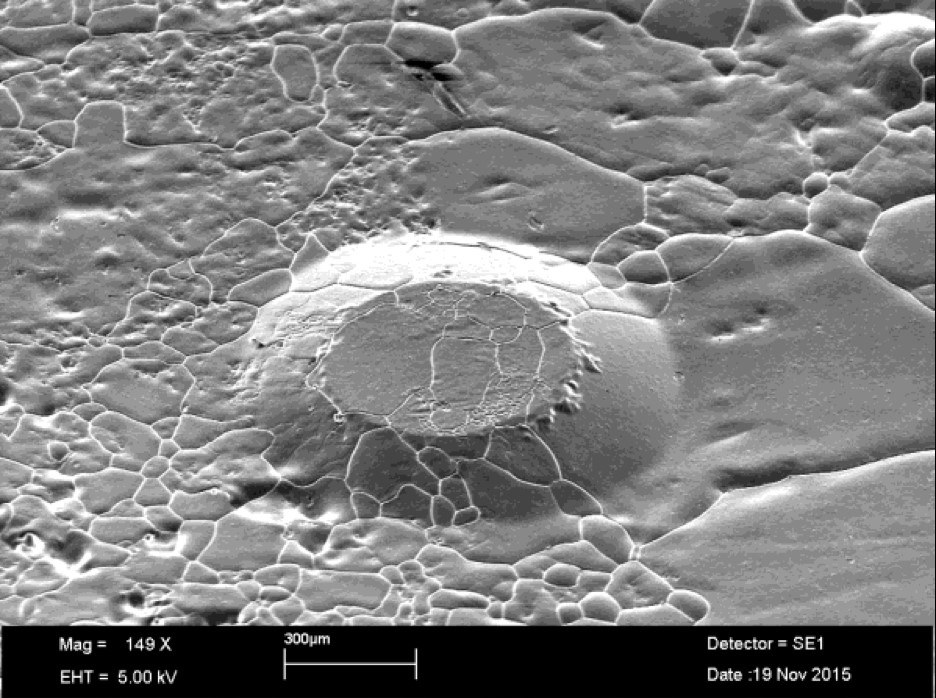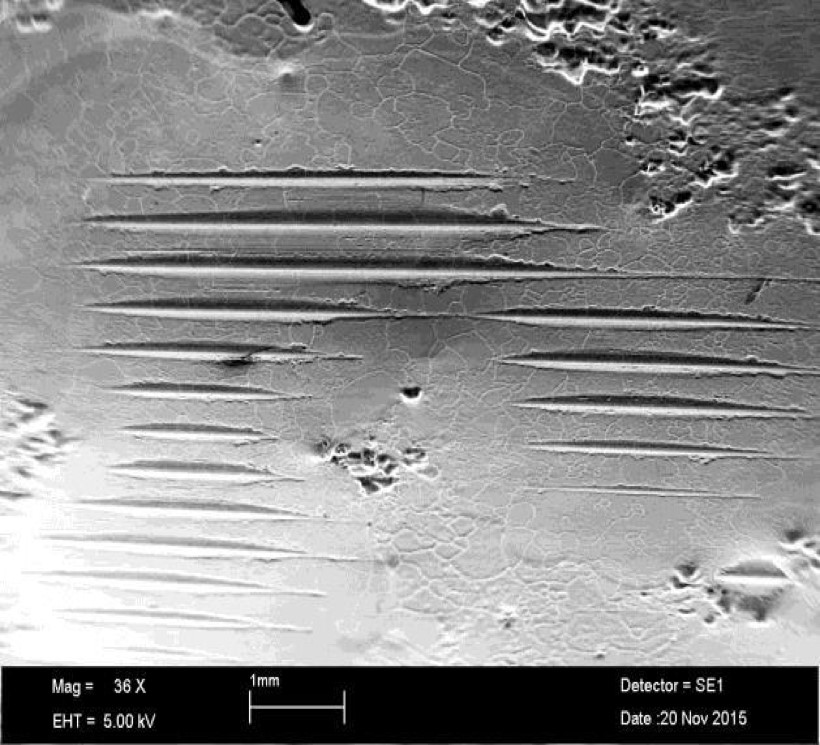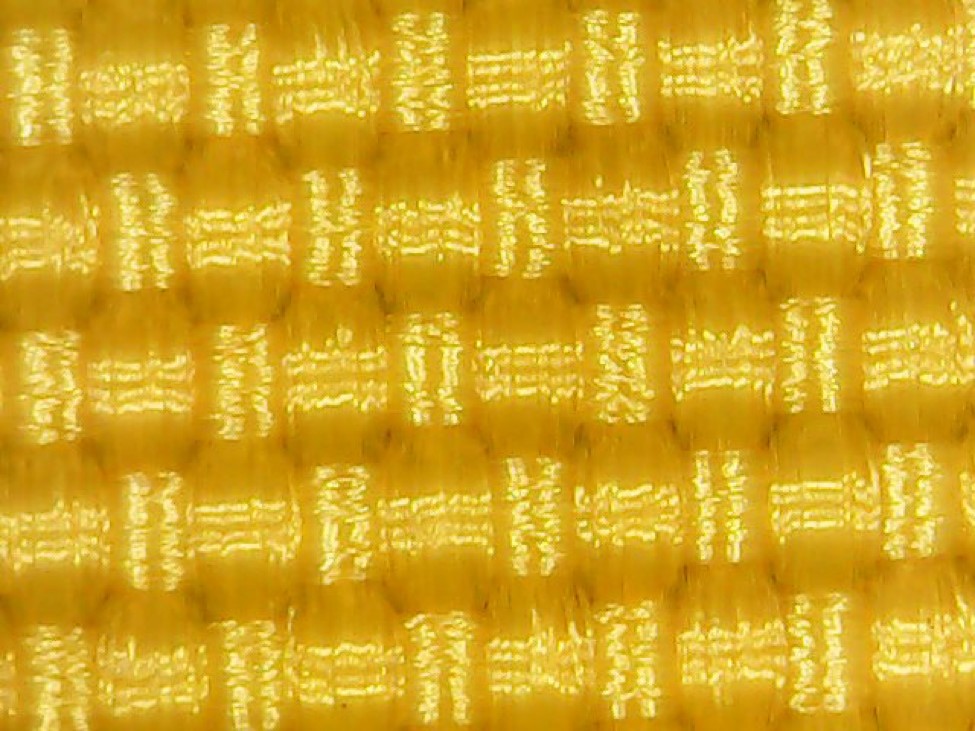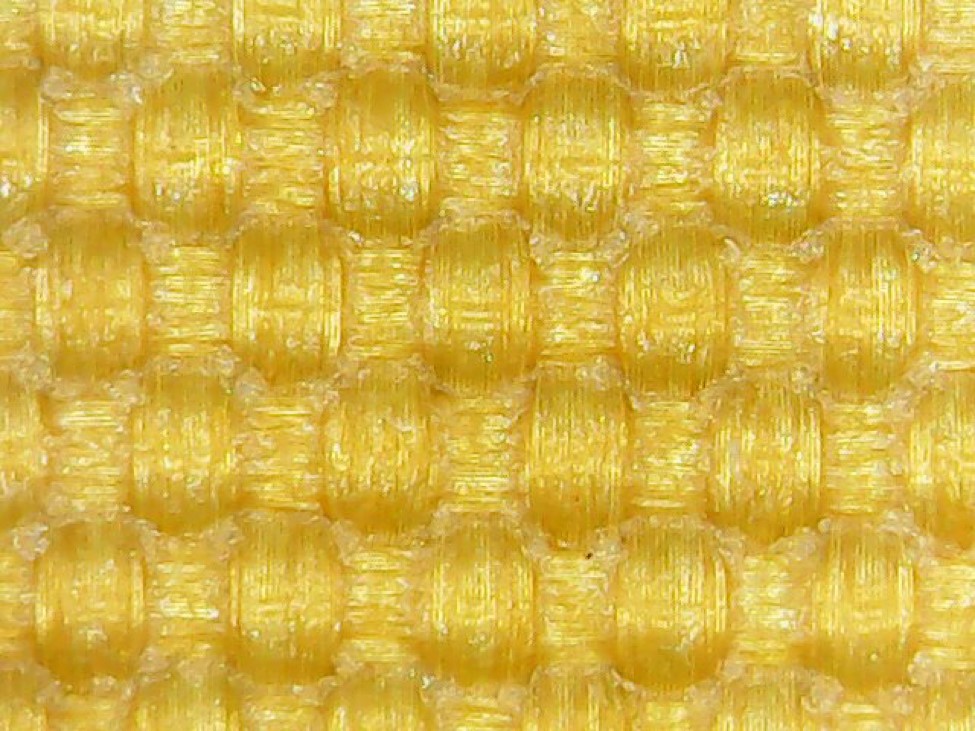An overview of the issue presented by Doug Flowers, President of Goldline Curling
My first exposure to the curling world was about 50 years ago when my father became manager of a new curling club. Ever since that time I have been close to the game as a player, supplier and devotee. Never in that period of time have I witnessed the tumult in the sport that we have seen in the past few years. In the eye of this tornado has been the pads we curlers use on our brushes.
If anyone should think this is a tempest in a teapot and is being ignored by the world at large, I want to show you this video.
Not only was our controversy of a scale to attract the attention of one of the most popular late night hosts, Stephen Colbert, it also had implications in terms of the ongoing inclusion of curling as an Olympic sport.
The issue had it’s genesis about four years ago when a company called Hardline introduced a new brush to the game. The first few years saw little controversy, however two years ago when sponsorship put the new brushes into the hands of elite curlers, some teams noticed that the Hardline teams actually seemed to be able to control the rock with their sweeping. In our world that had always been ruled by self regulation and sportsmanship, accusations of cheating surfaced, as did rancour between elite curlers, some of it quite physical.
The issue came to a head at an elite bonspiel in Toronto in September 2015. Non Hardline teams were fed up. These players not only resented a perceived unfair advantage, they also queried the consequence to the game if sweeping could actually manipulate a rock.
The traditionally understood purpose of sweeping has been “Straighter and Further” In other words you sweep a rock to cause it to bend later and to travel further. This traditional concept relies heavily on the thrower in terms of skill. It also relies on the fitness of the two sweepers because the more speed and pressure that is exerted, the straighter and further the rock will go.
The concern was that if new equipment in the hands of skilled sweepers could actually “steer” a stone, and even slow it down, then the thrower required little skill. Likewise fitness was not a major concern, as it was overtaken by a simple understanding on behalf of the sweepers as to the technique required to cause a stone to do what you wanted. If skill and fitness were not required to excel at the game, what would be the consequence in terms of continued Olympic participation?
In the minds of many, including a growing number of elite curlers, this was a road they thought would compromise the game. At the Toronto bonspiel a year ago Balance Plus, a supplier that has been around for over twenty five years, had Glen Howard’s team use a very aggressive pad on their brushes. The manipulation effect was of course pronounced and their point was made – that point being “Look where the game will go if we continue down this road”.
I actually think that the effect of the new Hardline pad was inadvertent – that is I think when the Hardline guys introduced their new product they had no idea of the effect or the consequences. However once the manipulation potential was discovered and optimized by teams such as Brad Gushue’s, a debate developed around the question “Is manipulation via new equipment a positive evolution of the game?” Brad’s team, and latterly others, discovered that when using an aggressive pad they could sweep on the high side to cause a rock to bend that way, and on the low side to cause a rock to bend in that direction – even causing the rock to bend against the curl. They also discovered that one sweeper alone was most effective in manipulating a rock in this manner.
Hardline’s business interests were of course tied to their pad and their position in the debate aggressively supported manipulation. The discourse on social media portrayed a David and Goliath battle, a battle wherein the new kids on the block with the cool idea were being thwarted by an entrenched establishment represented by the World Curling Federation, Curling Canada, and established suppliers, with Balance Plus receiving undo attention.
The players, amid all the rancour met in Toronto and more or less collectively agreed not to use what they termed “directional fabric” on their pads in subsequent events. The agreement did not hold and more rancour ensued, causing the WCF to enter the fray.
One of the WCF’s first actions was to conduct scientific testing with a university in Sweden. They wanted to find out from a scientific perspective what effect various fabrics, coatings, inserts, and techniques had on the playing surface and what was causing rocks to behave in the manner they were. What that testing showed in terms of impact on the ice was quite profound, as is illustrated by these pictures.
Taken from: WCF Brush Moratorium Report – final Dec 7,2015

Shows pebble that has been clipped by a Nipper. No stone has gone over the pebble, and it has not been swept.

Shows pebble that has been clipped and swept with a woven fabric pad without stiffener.

Shows pebble that has been clipped and swept with a pad with abrasive fabric and stiffener.
The new fabrics, notably those with stiffeners between the fabric and the foam, didn’t simply polish the ice below the pebble, they actually scored the ice below the pebble. It should be noted here that the Hardline pads had a plastic stiffener layer between the foam and the fabric within their pads. The scoring of course changed the interaction of the running band on the bottom of the rock with the ice. Over a relatively short period of time a number of elite teams learned how to sweep such that they could capitalize on the scoring to manipulate the stone. Knowing this, the controversy expanded to encompass ice deterioration as well. In a ten end game, or even an eight end game, with both teams using such equipment, what would be left of the ice, much less the pebble, in later ends.
Synthetic pads have been using materials such as Cordura for over twenty years. If we take the stiffeners out of the equation for the moment, what is it about the new pads that has changed to make them perform so differently? The fabric looks the same from one to the next. It has been discovered that the difference has to do with waterproofing and which side of the fabric is in contact with the ice. The fabric used for fabricating curling brush pads is generally the same as that used in the umbrella on your patio. Though both sides are coated, one side is treated with a heavier substance, usually polyurethane (PU) or poly vinyl chloride (PVC). The two sides of a typical fabric are shown here.

Uncoated side of Oxford 420D fabric

Coated side of Oxford 420D fabric
These are pictures of the actual fabric that has been ultimately approved by the WCF. You will find that pictures of other fabrics look very similar. The more substantive coating is quite obvious on the second picture. If this side is on the outside of the pad and therefore making contact with the ice, it is evident that it would be much more aggressive than the non coated side. And the effect is exacerbated if a stiffener is inserted between the fabric and the foam.
Top teams have used high side and low side sweeping for a number of years when using pads such as the EQ and the Norway. However since the coating on the side in contact with the ice was not substantive, the effect was relatively small and was considered acceptable.
With this research the WCF’s next step was to convene a Sweeping Summit, which took place in May 2016 and involved a number of elite players, the National Research Council, the WCF and interested manufacturers. In advance of the Summit the WCF conducted an extensive survey to determine the curling world’s thinking on the issue. The response was overwhelmingly in favour of simply “straighter and further”. In no uncertain terms the community let it be known that manipulation was not in the spirit of the game and needed to be eliminated.
The elite players were on the same page, some expressing that the fun had gone out of the game. More than anything they wanted to level the playing field. Not surprisingly the players recommended that all teams entering competitions leading to WCF events use the same pad in the same colour, that colour being mustard yellow. In fact one fabric was selected and ultimately it was determined that all suppliers will use this one fabric for their “WCF Approved” pads. The pads will be manufactured in accordance with WCF specifications, of course stiffeners, foils and ridges are eliminated, and the PU coating had to be on the foam side and away from the ice. Each pad that is made with this fabric and in accordance with all other elements of the new specifications, and have been tested and approved by the WCF will be branded with a unique certification code. The WCF is putting in place a process for testing and approval of other pads, however for the moment this one fabric is the only one certified for play in WCF events.
It should be understood that what the WCF has put in place is basically “pad lite.” You can brush on the high side, you can brush on the low side, if you really don’t understand what is going on, you can even brush with one sweeper – it is simply not going to make a difference in terms of the direction of the rock. We are back to straighter/further and two sweepers are going to be more effective than one. It is the right answer for the elite curler.
However it makes for an interesting environment right now. The certified pad must be used by teams entering events leading to WCF championships. National associations such as Curling Canada, provincial associations such as the Ontario Curling Association, events such as the Grand Slam of Curling and some leagues and bonspiels have all adopted the WCF certification as well. However that represents about 5% of curlers. The vast majority of curlers are recreational. Unlike the hockey stick used by Sidney Crosby, the brush used by Marc Kennedy will be “dumbed down” from what the recreational curler can use. In view of that should clubs adopt WCF certification, thereby compelling all their recreational curlers to switch to a compromised tool?
The WCF has clearly indicated that they do not feel that is necessary. You can view their position paper on recreational curling here. The following excerpt greatly helps to illustrate their position on this matter.
The following may provide some guidance for organisers and individual participants:
- For leagues, competitions or events contested primarily for recreation or fun, or for competitions or events contested primarily by novice or inexperienced curlers, it may not be necessary to limit which sweeping equipment can be used as a condition of competition.
- For leagues, competitions or events where substantial prizes or awards are earned, it may be advisable to require sweeping equipment conforming to WCF specifications be used as a condition of competition.
- In keeping with the ‘Spirit of Curling’, individuals who are elite competitors or very proficient sweepers should consider whether it is ‘fair’ that they use non-conforming equipment in a recreational competition even if the rules allow it.
I wish my crystal ball was clearer on that one – non of us on the manufacturing side know where the market will go. The approach we have taken at Goldline is to offer WCF certified pads, but to complement that with pads that have either been on the market for years and has never been questioned in terms of manipulating a rock, or new products that are designed to conform to the spirit of the WCF regulations. As far as Goldline is concerned all our pads will be available in two configurations, one to fit the traditional oval head, and one to fit our new AIR brushes. A club curler could purchase any of our pads and not have to worry that they would be challenged by an opposing team.
Where individual clubs go, and hence the market goes in terms of mandating pads is anyone’s guess at this time.
The term legal is thrown around a lot – as in “Is this one of the legal pads”. For the recreational curler anything is essentially legal. The issue is do you want to be subject to criticism from other club members for using a pad that is known to be capable of manipulating a rock beyond simply “straighter/further?”
As you can see it has been quite a year within our community.
Thank-you
Doug Flowers
President, Goldline Curling

Is the issue of equipment going to become the same as golf equipment. Golf equipment has become so advanced that most of today’s courses are becoming tame in comparison to a few years ago. With Golf courses can be lengthened hazards added and greens toughened. Unlike golf a sheet of ice is only able to be so long. Yes you can play with the speed and breaks in the ice but this will be adjusted to by teams within an end or two. Today’s athletes are more conditioned with training, nutrition and even mental training. These things no Association can control so it must come down to equipment. Even the PGA is beginning to look at limiting equipment advantages.
Just keep the game fun and the competition will follow
Thank you for what I think is a great explanation of directional sweep and the equippment used to accomplish this process. It is for years now I’ve heard of “directional sweeping” however no one, up to now, has been able to supply me with, what I believed to be an acceptable explanatio as to the why directional sweeping can be effective. This article does all of this and more!! I had never heard of stiffners or inverted fabrics on a sweping broom this article covers it all along with the various effects in each situation. The pictures of the different fablics and how the affect the ice, i had never seen before. Pro cyrlers make videos telling us that if you “this” this will happen And if you do “that ” that will happen but None of them tell us why. ThiS article explains all of this very well. Thanks again!! I also am a supporter of “STRAIGHTER, FURTHER.